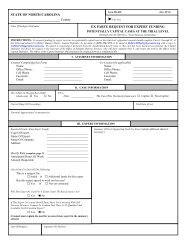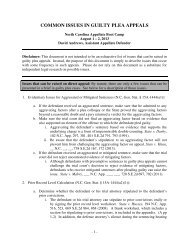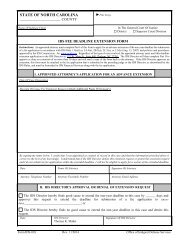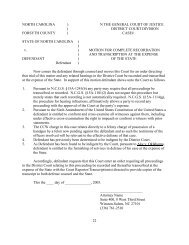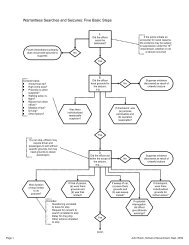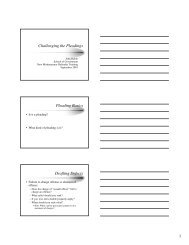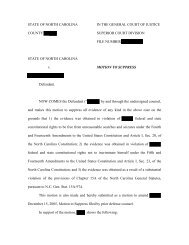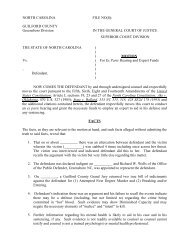a Ten-Step Guide to CLOSING ARGUMENT
a Ten-Step Guide to CLOSING ARGUMENT
a Ten-Step Guide to CLOSING ARGUMENT
- No tags were found...
Create successful ePaper yourself
Turn your PDF publications into a flip-book with our unique Google optimized e-Paper software.
file:///H|/PUBLIC/Defender Training/Trial School/2006/Materials/15 Closing Argument -- Kelly.htmEver try <strong>to</strong> read a book of several hundred pages with no chapters? Probably not. There is a reason forthat. Without some framework for processing it all, the reader gets information overload and just givesup. The same is true for closing arguments. You have lived and breathed this case for days, weeks, andmonths by the time of closing. You can jump back and forth between issues & <strong>to</strong>pics & players withou<strong>to</strong>nce losing the action. Jurors don't have that luxury. This is their one and only time through. It is mucheasier for them <strong>to</strong> get lost than you realize! And if you lose them? You lose.1. Chapter Headings:Always give your jurors a "heads-up" that you are moving <strong>to</strong> a new <strong>to</strong>pic. This can be as simple as a"Now let's talk about the sloppy police work brought <strong>to</strong> you in this case." Or you may want <strong>to</strong> use a flipchart <strong>to</strong> list "the five things you heard in this case that show us the police have the wrong man," thensimply flip the page <strong>to</strong> the next chapter of your argument when you're ready <strong>to</strong> move on. Anotherexcellent method of chapter headings is <strong>to</strong> simply ask the questions you know the jury wants answered.Ex. In a rape case where the defense is consent but all parties agree the victim was found in tears, If thisis what she wanted, if this were her choice, then why was she crying? Then answer the question! Thereare any number of ways <strong>to</strong> communicate your chapter headings <strong>to</strong> your jurors and by all means drawupon your own creativity in the process. Just make sure you DO it.2. Transitions Between ChaptersEven with a chapter heading, shifts of <strong>to</strong>pic can be jarring if they are <strong>to</strong>o abrupt or seem whollyunrelated or unconnected in any way <strong>to</strong> what has gone before. It's as if you're speeding down a street andsuddenly slam on your brakes <strong>to</strong> make a sharp, right turn. Your passengers may be dragged along withyou, but if they didn't know it was coming they may take a few minutes <strong>to</strong> catch their breath again. Youcannot afford for your jurors <strong>to</strong> spend a few minutes "catching up" <strong>to</strong> you during your closing argument.After all, you only have a few minutes! How <strong>to</strong> avoid it?Make sure you slow down before you reach the turn:a) Give each chapter of your argument a clear and definite closure;file:///H|/PUBLIC/Defender Training/Trial School/2006/Materials/15 Closing Argument -- Kelly.htm (9 of 13)6/28/2006 12:35:33 PM




